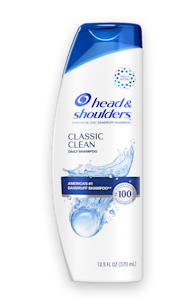HAIR DYE: IS IT DAMAGING YOUR HAIR & SCALP?

Dyeing hair has become increasingly popular. But it might be doing damage to your hair and scalp that you can’t see. Read our guide to find out more.
Do you prefer blond, brunette or redhead? Maybe pink is more your thing, or even blue or purple? Thanks to modern cosmetics, you can choose whatever color you’d like for your hair.
But whether it’s done in a salon or in your own bathroom, there can be a hidden risks to dyeing your hair.
HOW DYE AFFECTS YOUR HAIR
Hair dyes contain a cocktail of strong chemicals, so it’s no surprise that frequent use of them could damage hair.
Dyes can include chemicals like:
Ammonia
Hydrogen peroxide, and
Sensitizers like Paraphenylenediamine (PPDA)
Each of these chemicals may cause problems, from drying hair out, to leaving it brittle and prone to breakage.
They actually do this working as a team. Ammonia allows the dye to penetrate the shaft of your hair by swelling it and lifting hair cuticles, the protective plates that cover hair. Hydrogen peroxide destroys your hair’s natural color, while also drying it out.
The chemicals also strip away hair’s natural protective lipid layer, leaving it exposed to future damage and feeling rougher
Dyes used as color additives bring their own challenges. Sensitizers such as PPDA in particular are known as a common allergens.
Combined, these ingredients can be very damaging indeed, even causing hair loss due to breakage over time.
HOW DYE AFFECTS YOUR SCALP
Unfortunately, the damage doesn’t stop at your hair. Frequent scalp exposure to the chemicals used in hair dyes can bring its own problems.
These chemicals can remove the protective lipids/oils from your scalp, leaving it exposed and vulnerable to damage from the environment, styling products and other irritants.
You may see these symptoms:
Stinging
Scalp itching due to skin irritation
Swollen patches
Red skin
Luckily, there are steps you can take to minimize the damage.
DYEING HAIR SAFELY
Any time you dye you hair you’re exposing yourself to potential problems. But with some care you can easily manage the risk.
The basics:
Always follow manufacturer’s usage instructions
Start with a healthy scalp: don’t use hair color until scalp issues like dandruff or psoriasis are resolved
Refrain from washing your hair a day or two before coloring – the natural oils help protect your scalp while coloring
Before you start on your hair, put a small amount of dye on your skin to rule out the possibility of an allergic reaction
Always wear gloves when dyeing your own hair
Don’t leave hair dye in longer than the instructions recommend
Don’t mix dyes from different brands together
To take care of your hair and scalp after you’ve dyed it, use of a moisturizing shampoo. If you do experience some irritation or dryness, try a gentle shampoo to calm your scalp.
Use the conditioners that come with colorants, and regularly use conditioner whenever you shampoo to help protect your hair and scalp.


